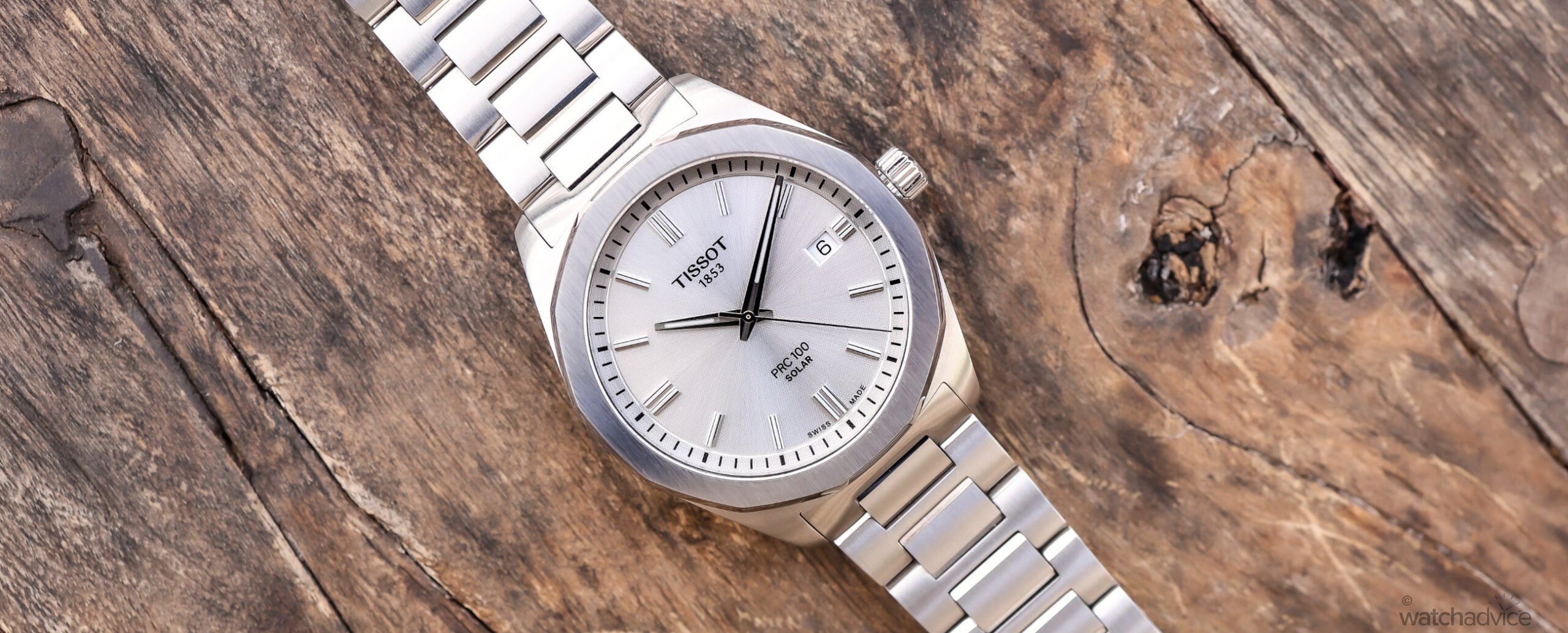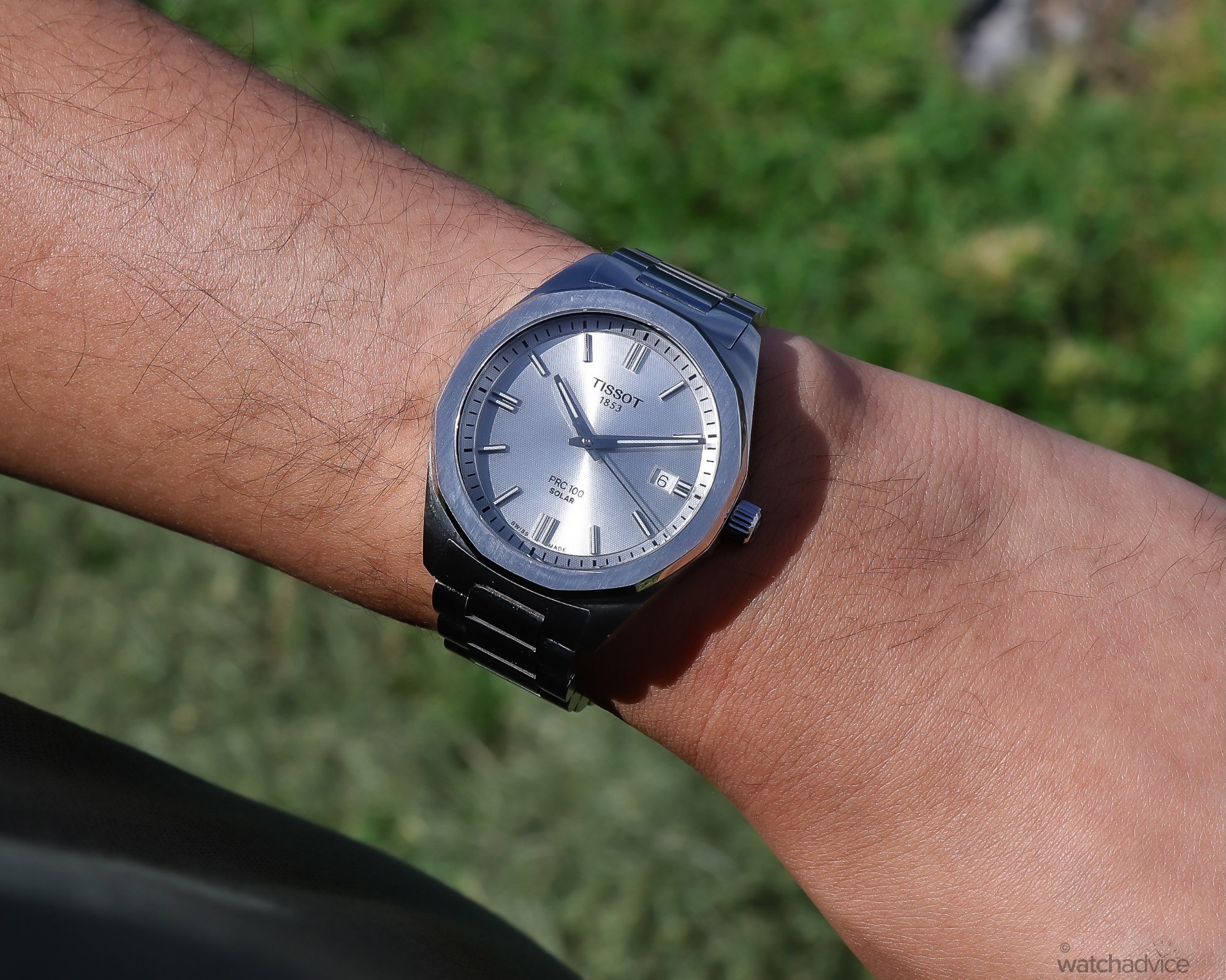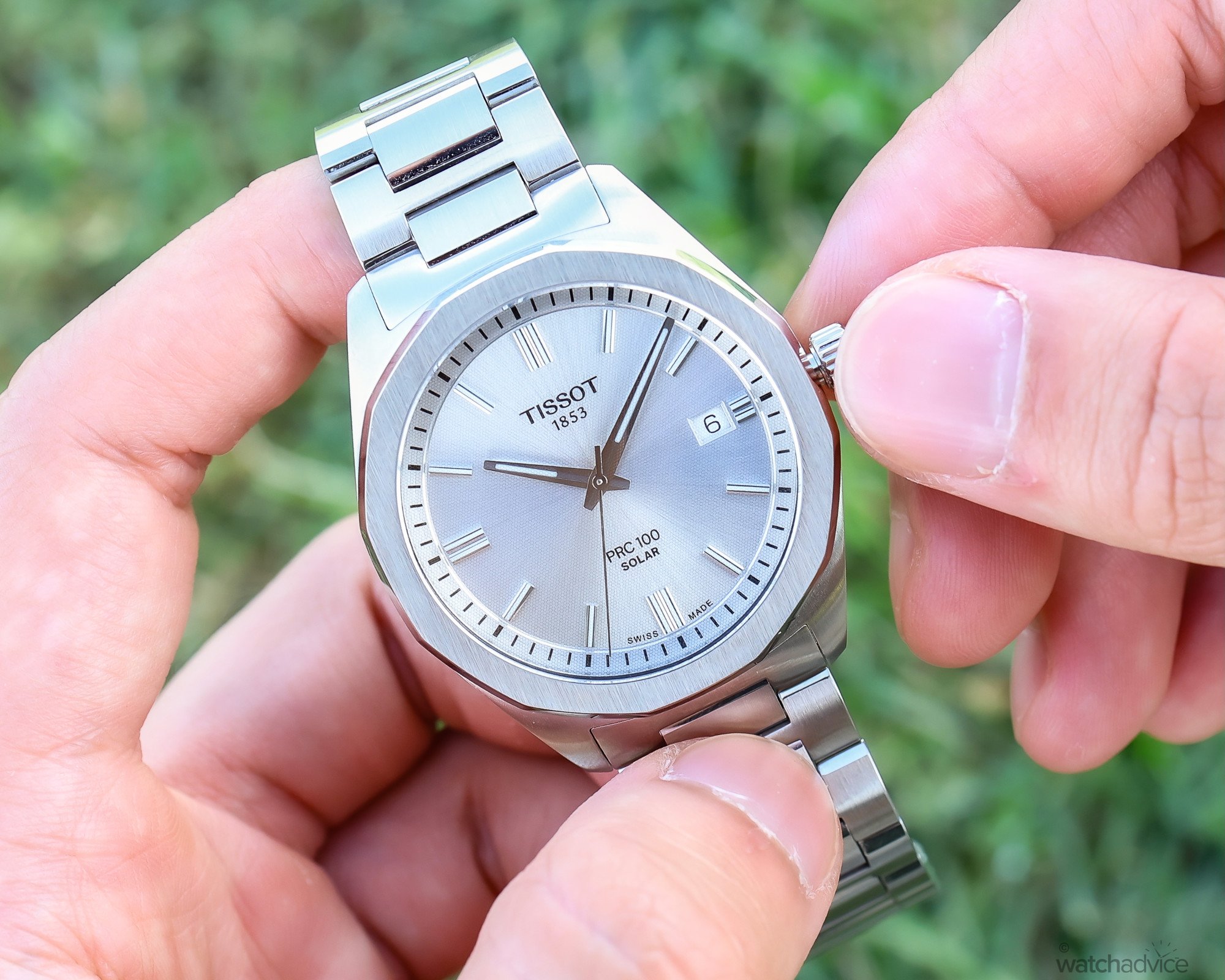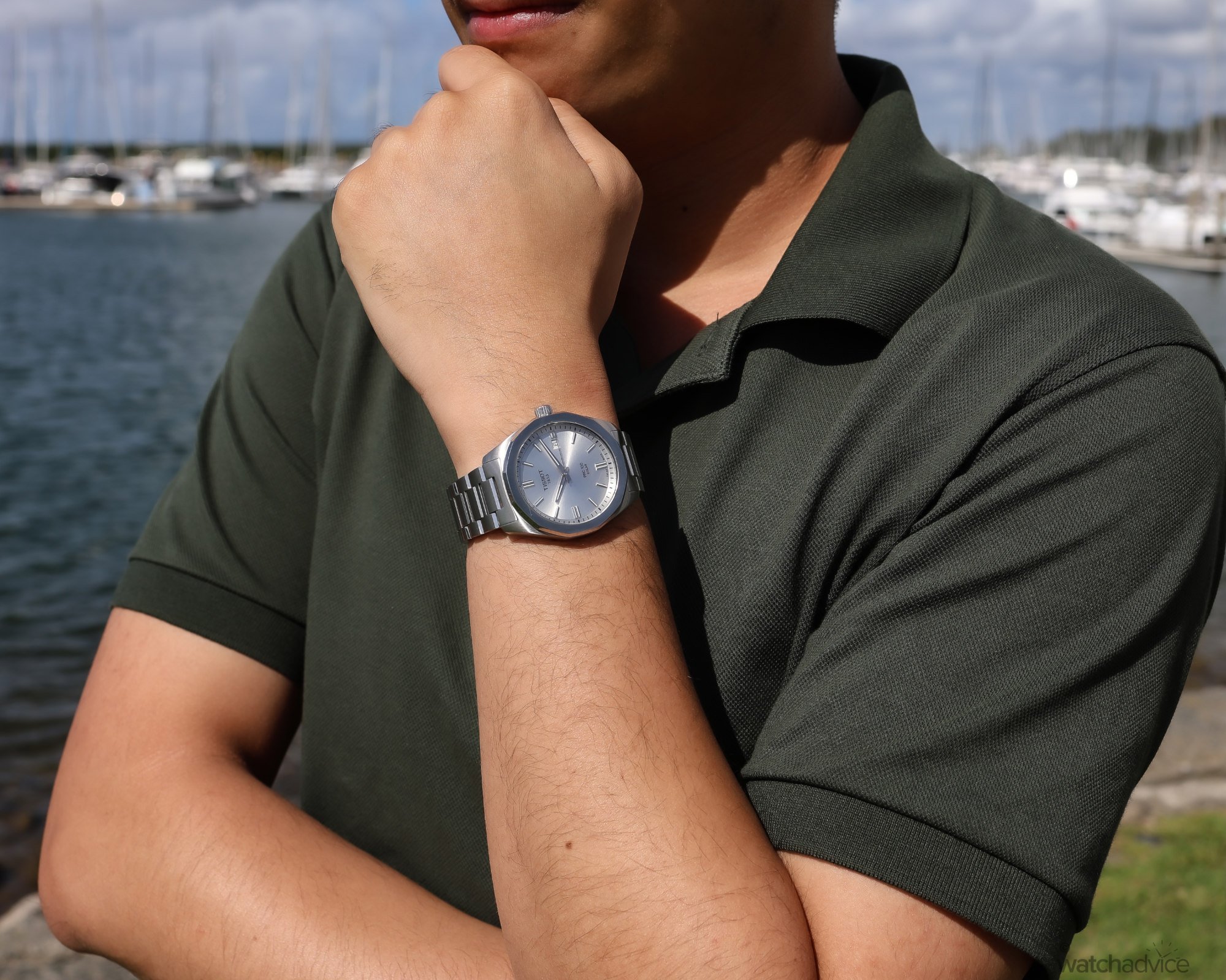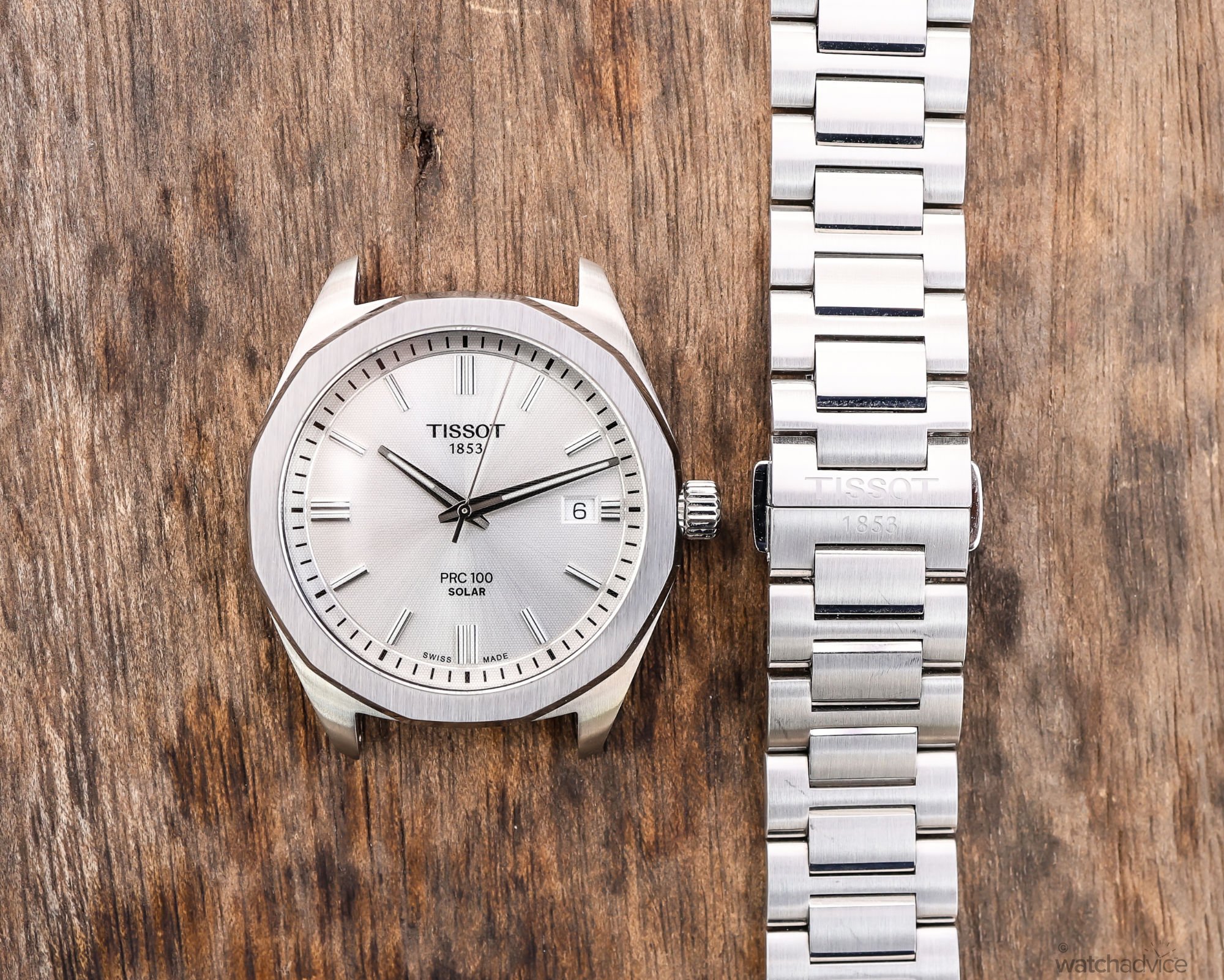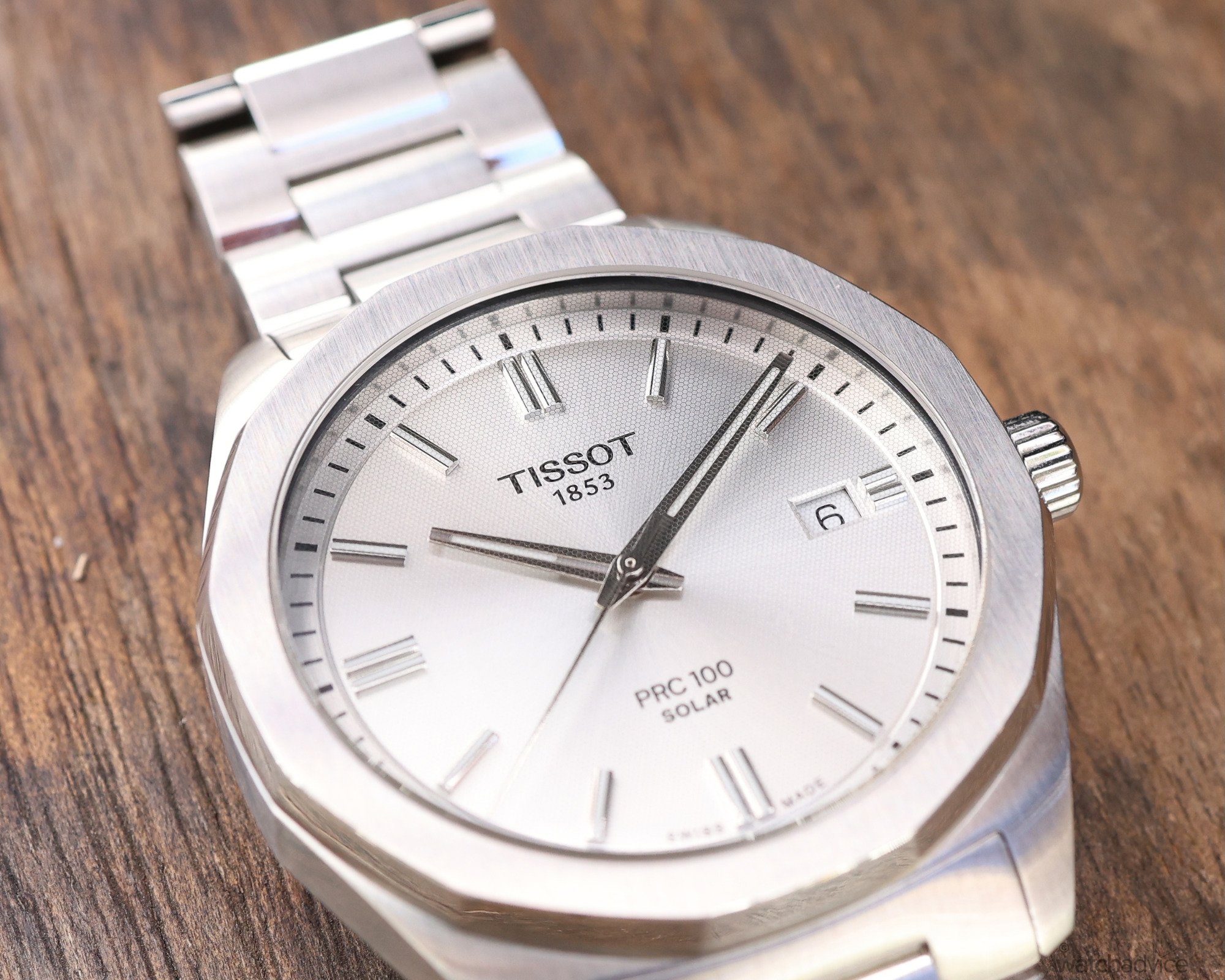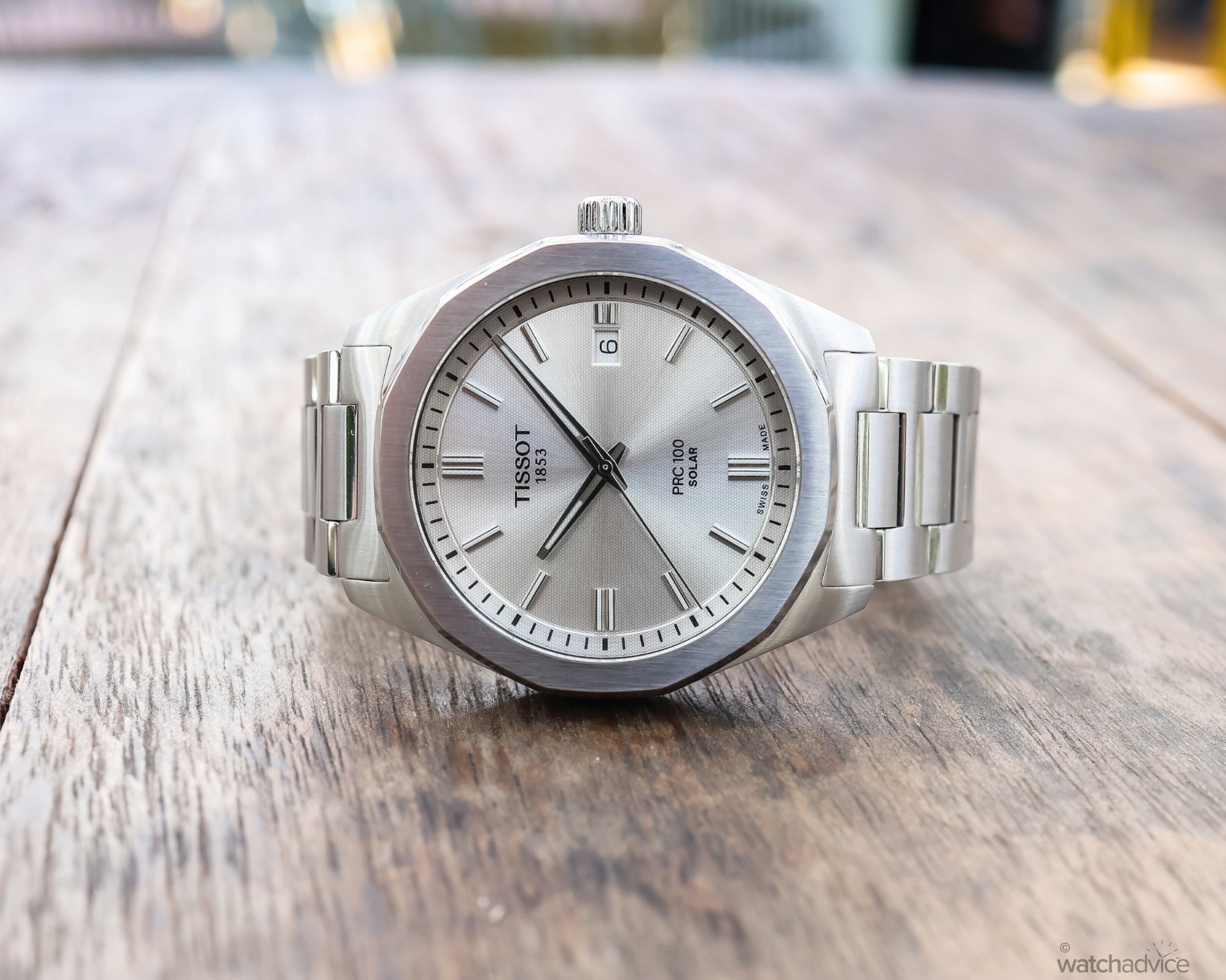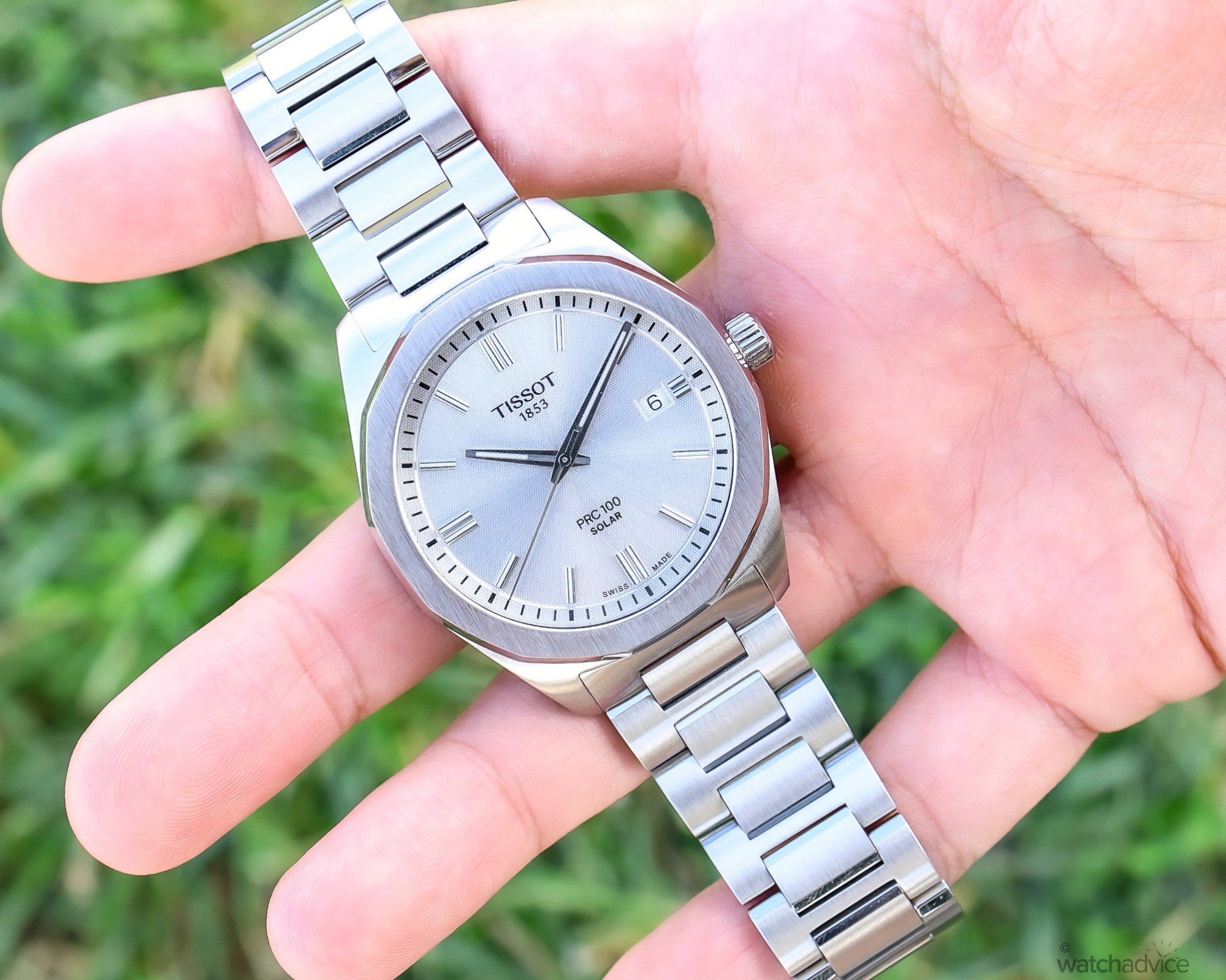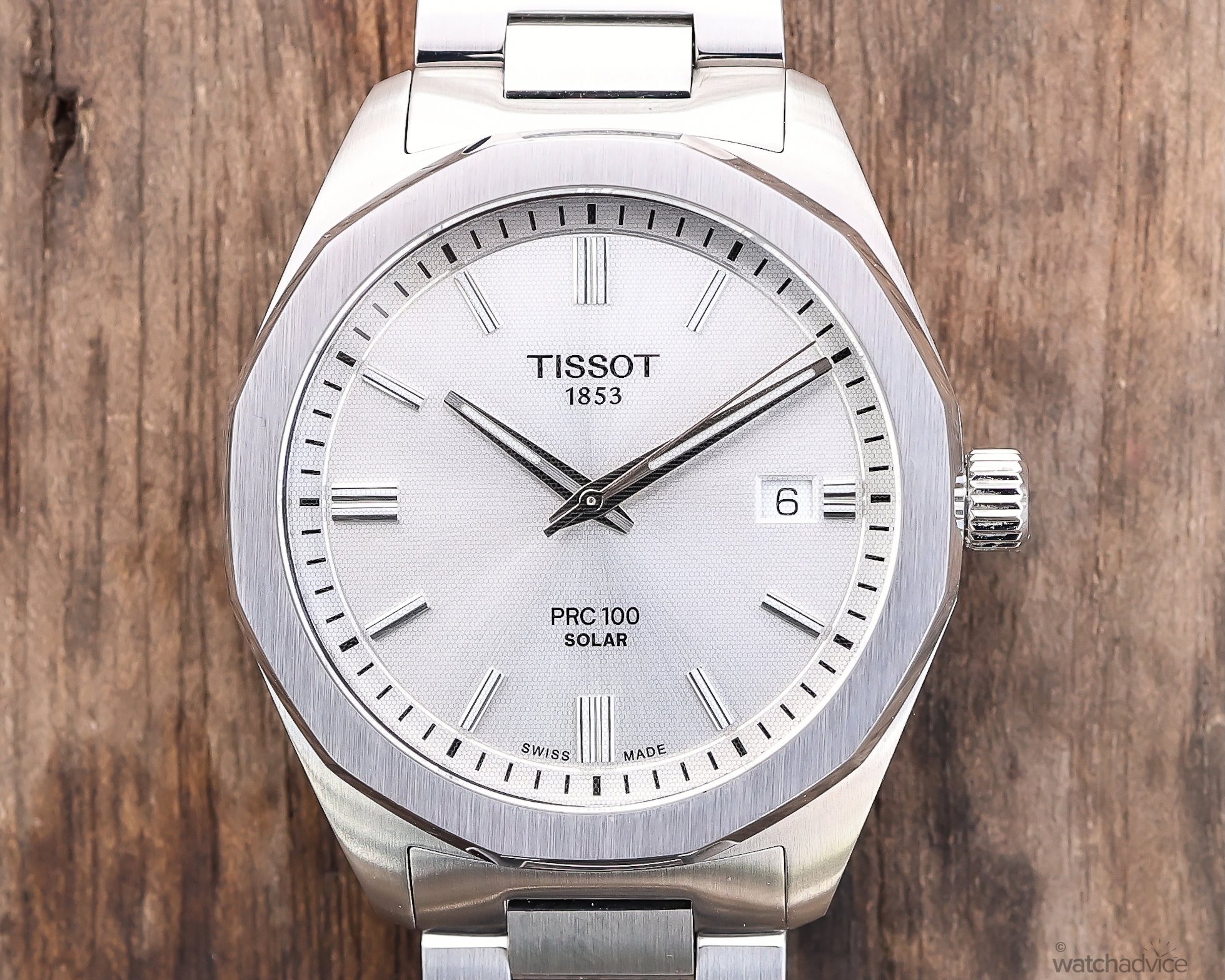While the PRC 100 Solar proved tough enough for Central Australia, would it be able to withstand the daily activities of an upper-middle class watch nerd? Let’s find out!
What We Love:
- Elegant, classic design
- Reliable and robust
- Wears slim and close to the wrist
What We Don’t:
- The visible solar cells might put some people off
- Blank caseback — a blessing and a curse
- Can they add a microadjustment?
Overall Rating: 9/10
- Value for Money: 10/10
- Wearability: 9/10
- Design: 8/10
- Build Quality: 9/10
Everyone loves a reboot — whether it’s Michael Mann’s Heat, Robert Eggers’ Nosferatu, or Todd Howard’s Oblivion, there’s something magnetic about a classic getting the modern treatment.
The watch world is no different. Heritage designs have seen a renaissance, with luxury brands like Zenith, TAG Heuer, and Rolex bringing back beloved models. Timepieces like the Chronomaster Revival Shadow, Carrera Glassbox, and Land-Dweller either faithfully revive past icons or remix archival elements into something fresh.
Neo-vintage revivals — more recent classics brought back into production — are also gaining traction. While Omega’s Constellation and Piaget’s Polo ’79 represent the high end, this trend has seeped into the more accessible tier of watchmaking. Japanese powerhouses Seiko and Citizen have often led the charge, but one European brand stands tall among them: Tissot.
Part of the Swatch Group, Tissot made waves in 2021 with the PRX, a heritage-inspired hit that arguably helped ignite the modern remaster trend. Since then, they’ve followed up with retro lines like the PR516 and Heritage 1938, but now they’re digging into their neo-vintage archives.
Enter the PRC 100 — a defining model of the 2000s, built on three pillars: Precision, Robustness, and Classic design. In 2025, Tissot has finally brought it back, complete with updated aesthetics and a fresh movement under the hood.
Related Reading: Praise The Sun — Tissot’s PRC 100 Makes A Spectacular Return!
First Impressions
I’ll admit it: I’m a sucker for a good reboot. But it has to be done right. Take the Oblivion remaster, for example: better graphics, smoother gameplay, and a more stable runtime are all well and good, but it just wouldn’t feel like Oblivion without that charming bit of jank; It’s part of the game’s identity. In the watch world, while the context is different, my criteria remain the same: if reviving a heritage model means stripping away what made it special in the first place, what’s the point?
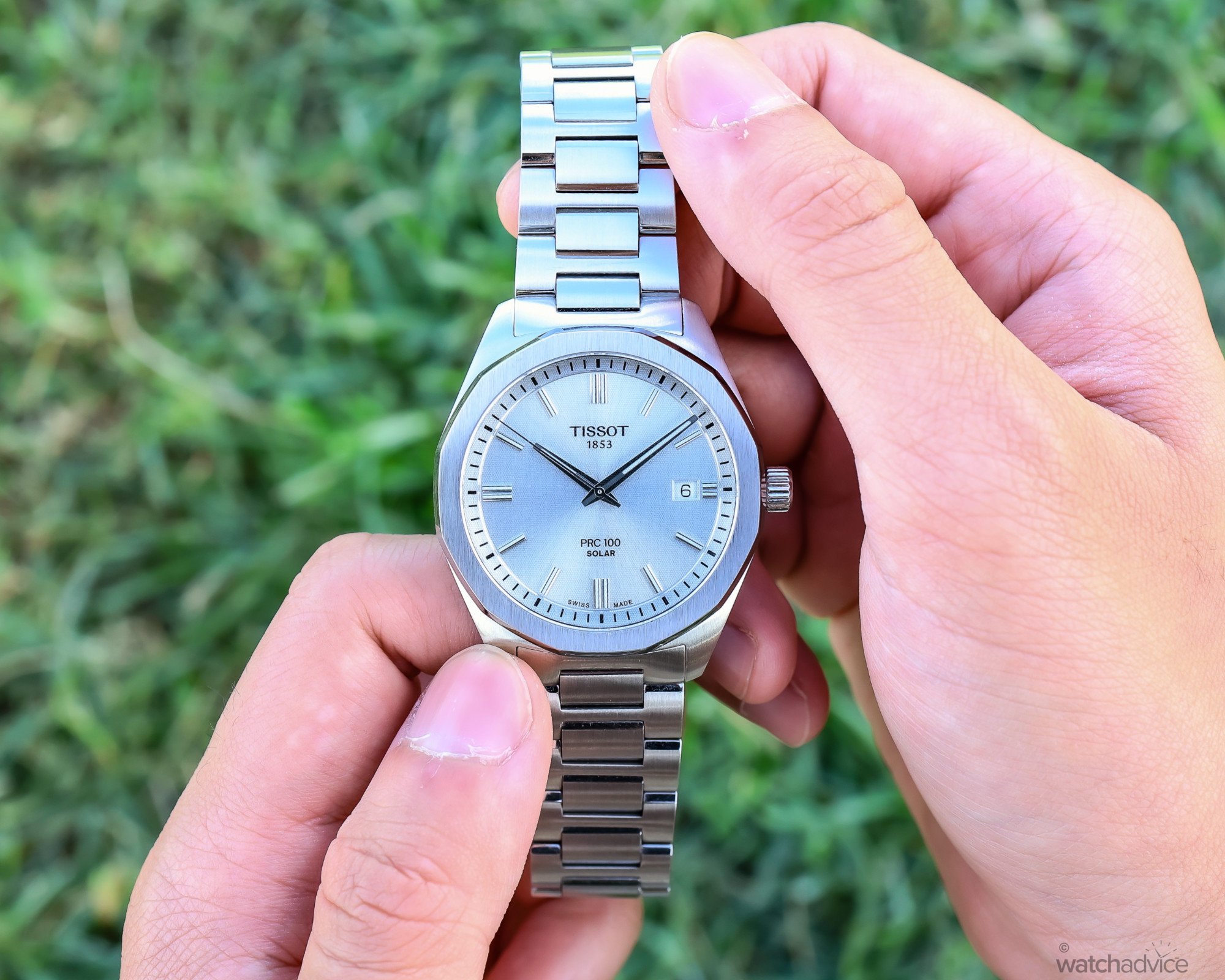
Thankfully, when I first saw the press images for the new Tissot PRC 100 Solar, my scepticism eased somewhat. Aside from a new bracelet, it looked like a faithful recreation of the original. But what really caught my attention was the movement — a solar quartz calibre, something rarely seen in Tissot’s lineup outside the T-Touch range. It felt fresh, yet grounded in the watch’s roots.
Naturally, I was wondering when Watch Advice would reach out to Tissot to get our hands on one — but as it turns out, they beat us to the punch. Tissot reached out first, inviting us to their official launch event… in Central Australia. With Chamath and Matt tied up in Switzerland covering Watches & Wonders 2025, and Sam buried under a mountain of new releases, I was nominated to represent Watch Advice at the launch.
Related Reading: Tissot Launches The New PRC 100 Solar In Central Australia
I was thrilled to test the PRC 100 Solar in such a rugged setting, but even more surprised when I found out the review sample was mine to keep. So yes — this review technically comes from an owner’s perspective. But don’t worry: generous gift or not, I’ve worn this thing through the desert, and I’m not about to start pulling punches.
The Design
From the outset, I wasn’t entirely sure how I felt about the PRC 100 Solar’s design. It’s a close-to-faithful recreation of the original, sure — classic and clean — but also a bit basic at first glance. That said, it’s hardly a criticism. Tissot hasn’t needed to reinvent the wheel here; the design slides neatly into today’s watch landscape without feeling outdated or out of place.
What stood out most, though, was how refined the overall execution felt. It’s clear that a lot of thought went into this revival, with Tissot taking great care not to lose the identity of the original. The case has a utilitarian vibe, finished with consistent brushing across the case body, flanks, bracelet, and butterfly clasp. While the aesthetic leans Spartan, the quality is anything but — the finishing feels on par with what we’ve seen from the PRX and other more premium entries in the Tissot lineup.
The dodecagonal bezel, interestingly, features a mix of finishing techniques — vertical brushing on the top and polished edges all around. While the brushing is practical for scratch resistance, I still managed (in my infinite wisdom) to nick it. Admittedly, that’s partly on me, but it’s also due to the sapphire crystal sitting nearly flush with the bezel. That said, with a watch like this, I’d much rather scratch the bezel than the crystal.
Beneath the sapphire lies a subtle hexagonal honeycomb pattern, which is not immediately noticeable and doesn’t hinder legibility, but I can see why it’s potentially bothersome. From certain angles, it almost makes the dial appear slightly blurry — perhaps exacerbated by the bright silver sunray-brushed dial on my model. I suspect the effect would be less noticeable on darker dial variants, but only a hands-on look at those could confirm that.
The dial itself is topped with rhodium-plated hands and applied indices; all filled with a healthy dose of blue Super-LumiNova. While I haven’t conducted any formal lume tests, I can confidently say it outperforms many sports watches, even at higher price points. The applied elements sit slightly above the printed minute track, which, while not finished to the same degree, is at least well colour-matched. I just wish the date window got the same treatment.
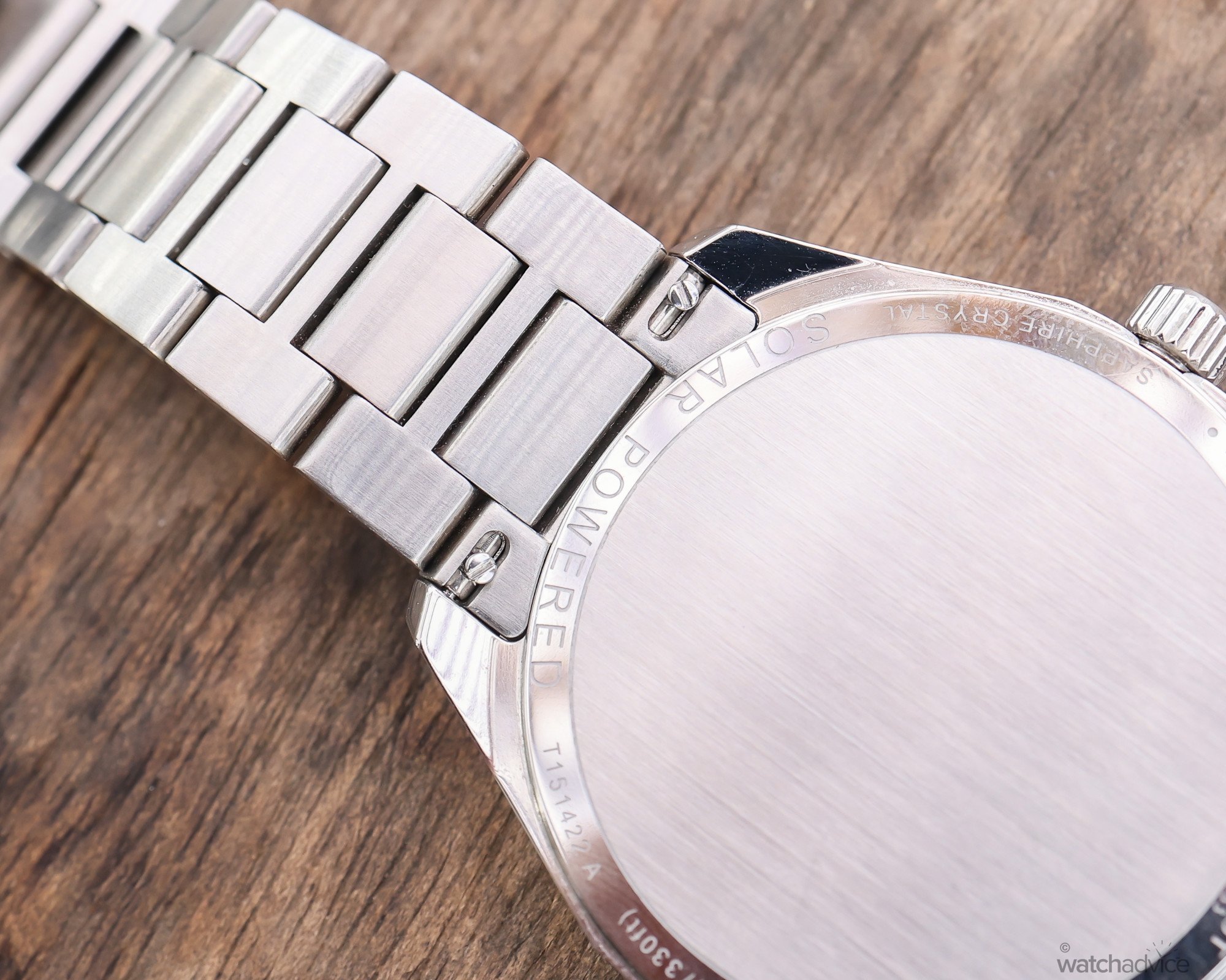
Flipping the watch over, you’re greeted by… well, not much. Apart from a polished rim engraved with the usual specs, the vertically brushed centre of the case back mirrors the bezel’s finish. It’s not exactly awe-inspiring — but if you’re gifting this for a graduation or special occasion, there’s ample real estate for a personal engraving. For detail lovers, though, it might feel a little plain. In essence, though, the overall design is elegant, classic, and stays true to the original PRC 100’s DNA.
How It Wears
One small moment of pride when picking up my PRC 100 Solar was that I actually nailed my wrist size — it fit perfectly right out of the box! At 16.3cm (about 6.4 inches), my wrist isn’t exactly large, but it can accommodate a fair variety of watches. That said, the PRC 100 Solar was always destined to be a great fit. With a 39mm case diameter, 44.6mm lug-to-lug, and a slim 9.22mm thickness, it’s the definition of a ‘Goldilocks’ watch, sized just right for almost any wrist. In fact, both my girlfriend and my mother tried it on, and it suited them just as well — either a testament to Tissot’s attention to ergonomic design or just a roast of my diminutive wrist size.
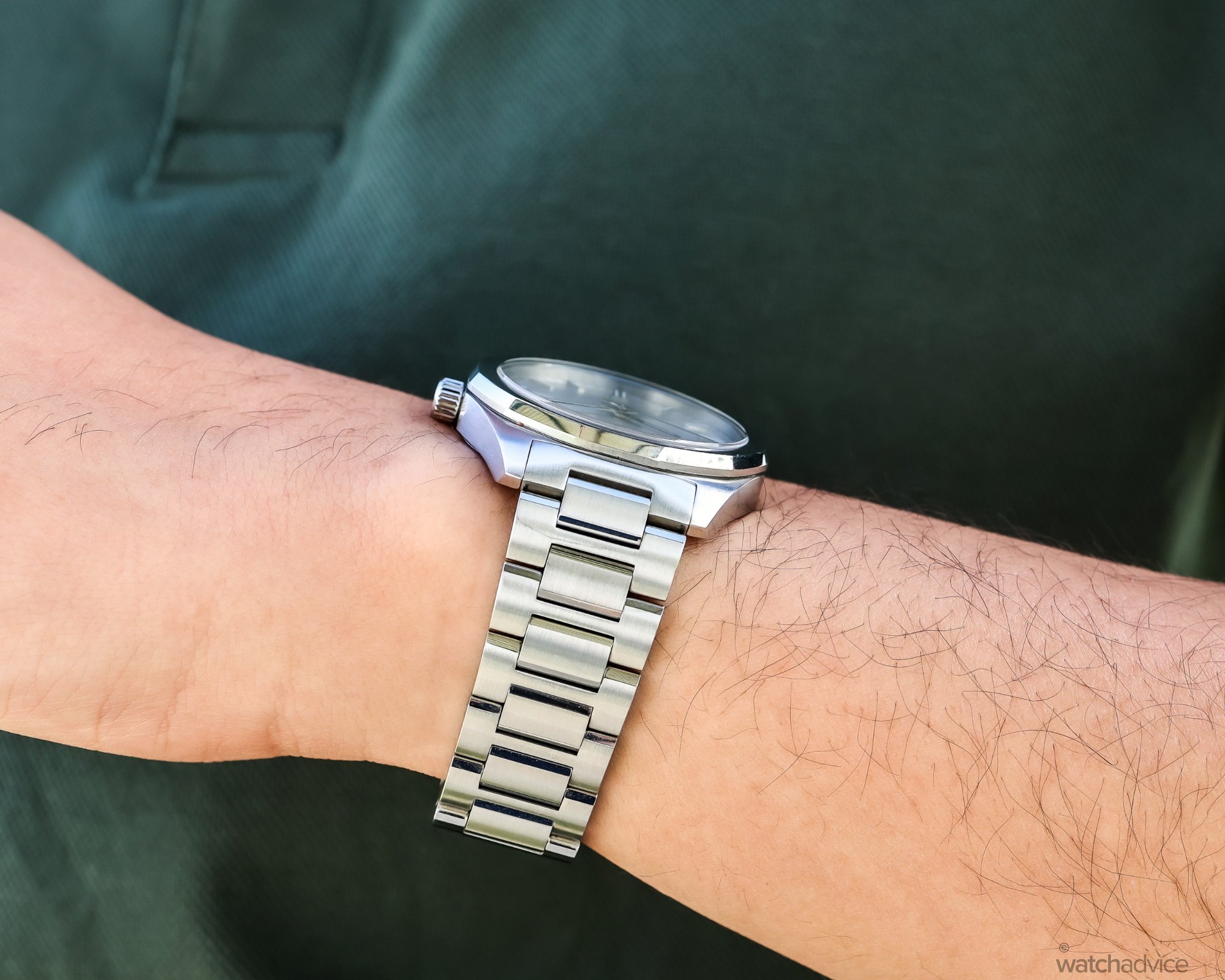
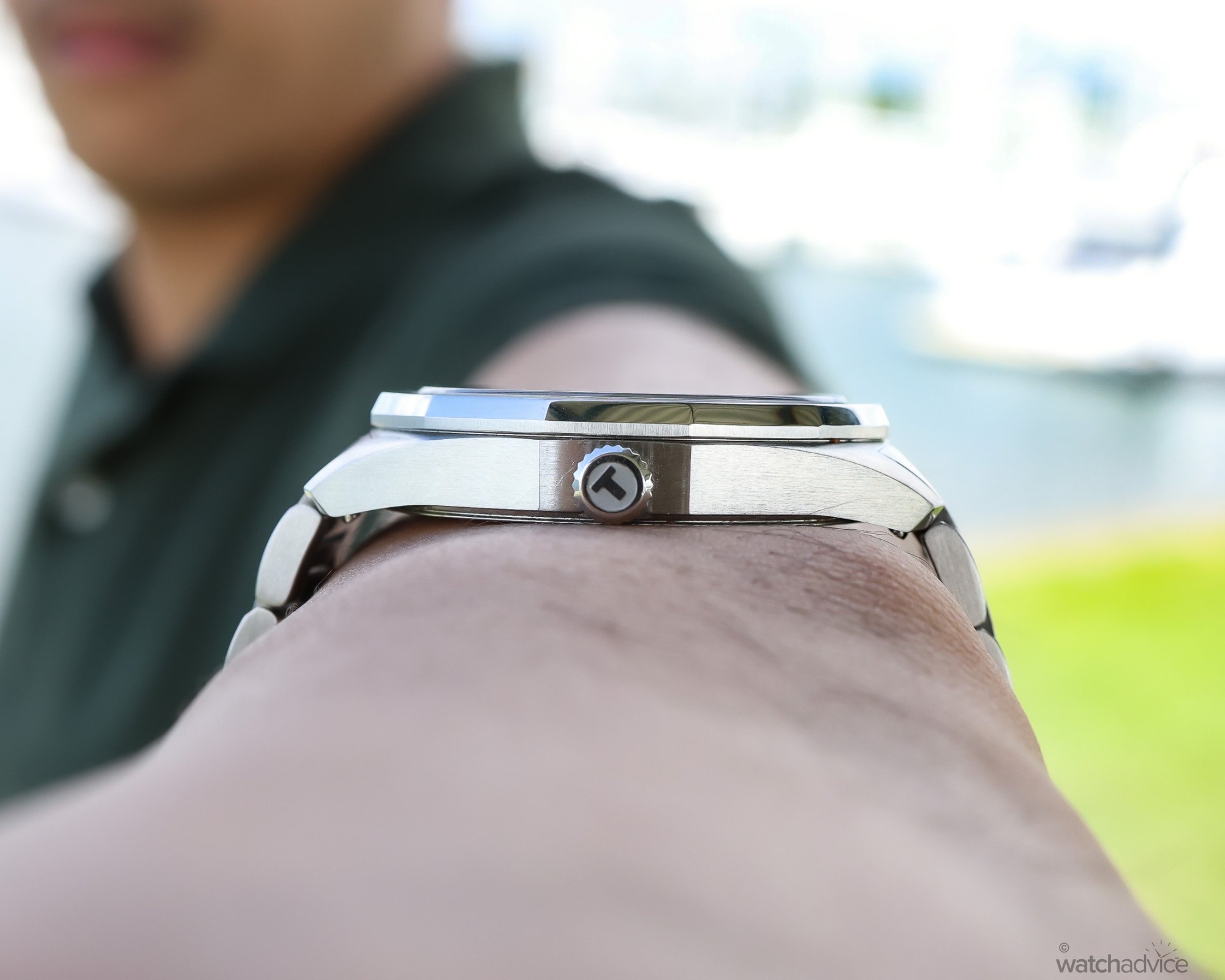
The H-link bracelet is secured with a butterfly clasp, which helps the watch sit flush and comfortably on the wrist. Still, for those of us whose wrists fluctuate with temperature (like mine), I would’ve preferred a more traditional folding clasp with micro-adjustments. I understand that micro-adjustments are still rare on butterfly clasps, but with more brands adopting in-clasp flexibility, it’s an area Tissot could certainly explore.
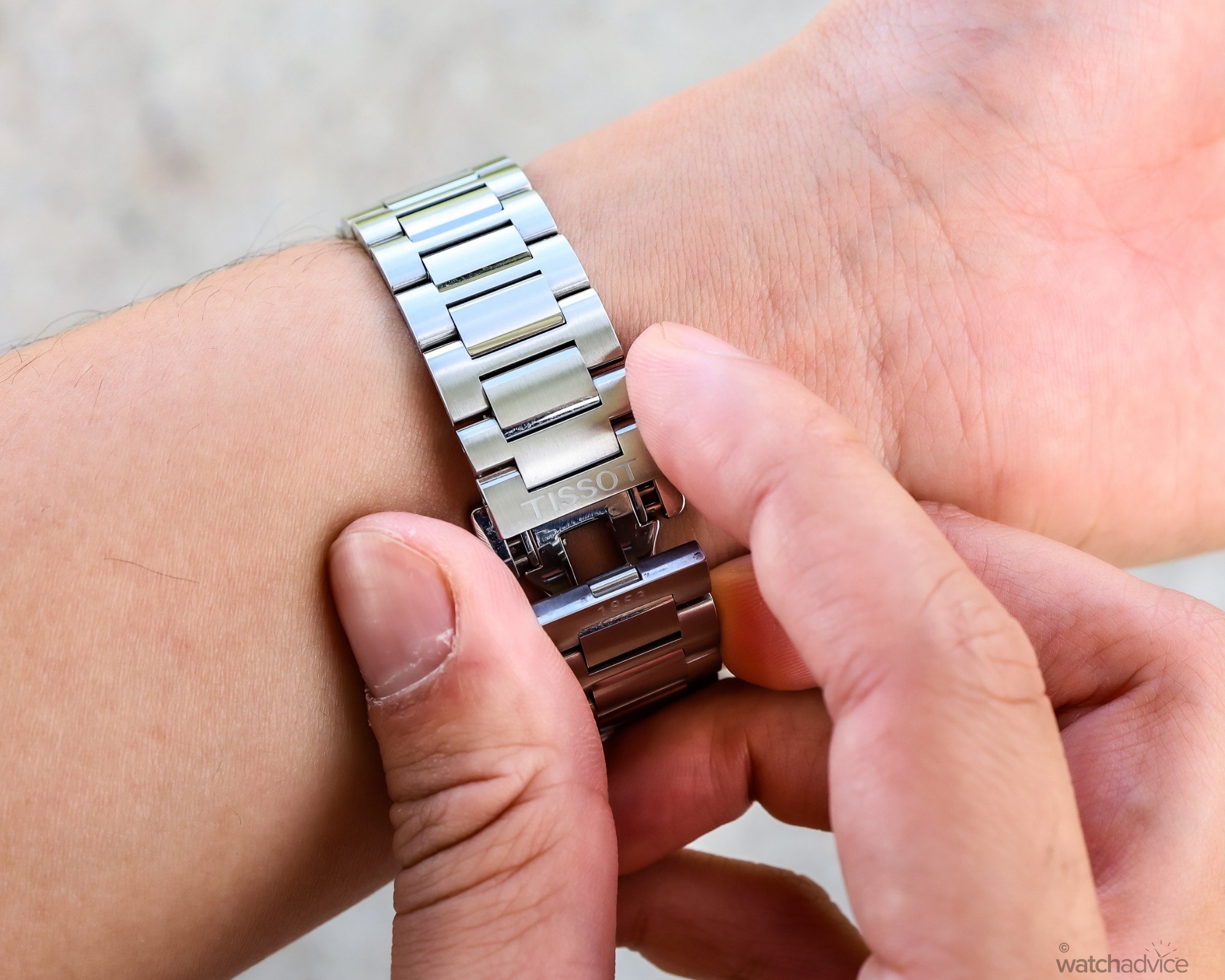
While it’s not made from titanium like other watches I’ve reviewed, the stainless steel PRC 100 Solar wears surprisingly light — a benefit of its quartz (well, solar quartz) movement. I eventually re-added a half link to accommodate my wrist changes and found it made a world of difference for all-day wear.
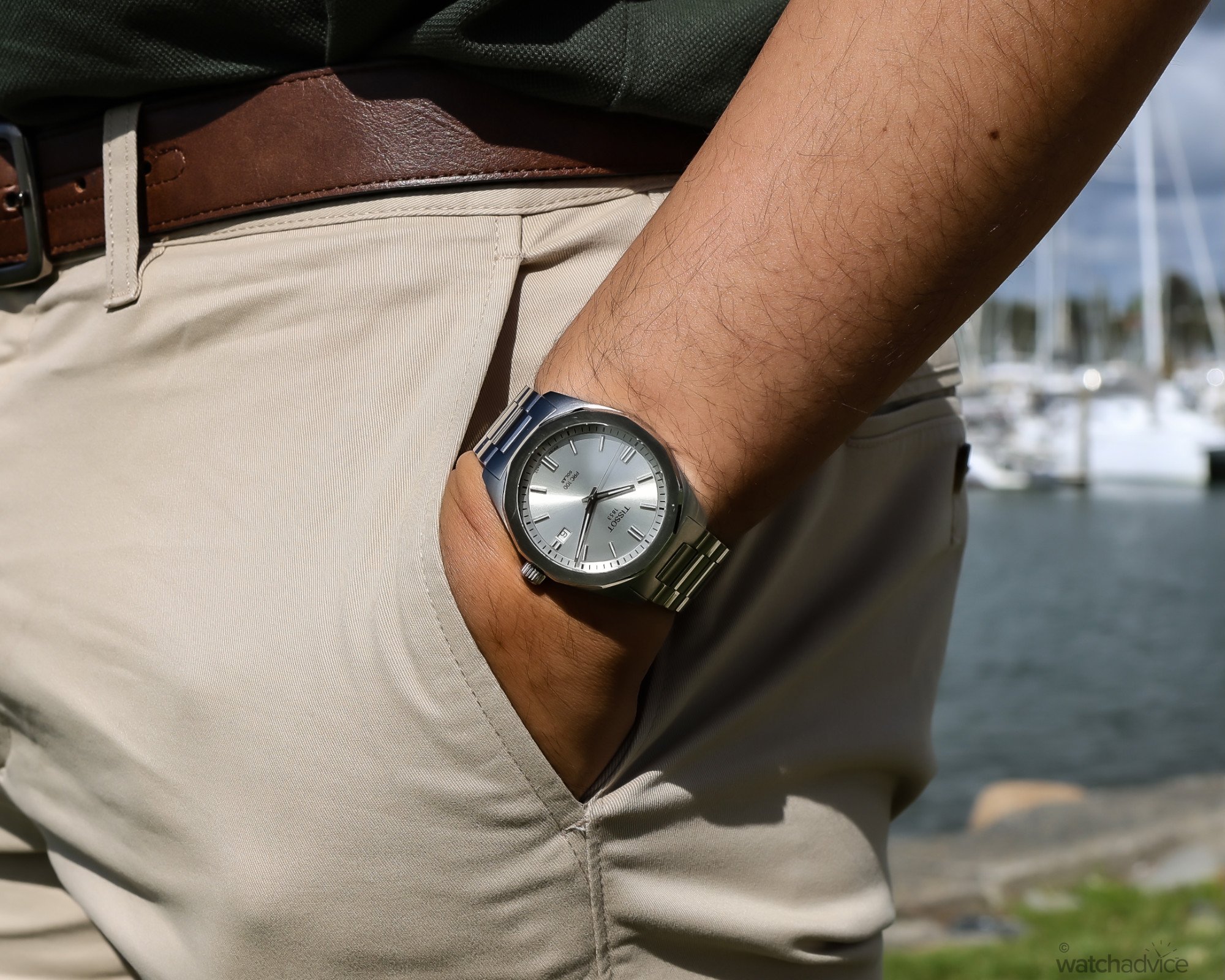
Thankfully, the watch features an interchangeable strap system, which meant I could easily switch things up. Tissot offers a nice range of leather options — and some models ship with leather fresh out the box — but I found myself rotating between the stock bracelet and a third-party fabric NATO. For a watch with 100m water resistance and a robust build, it wears perfectly on a military-inspired strap. Still, I wouldn’t mind checking out Tissot’s Milanese bracelet at some point!
The Movement
As I hinted at earlier in this article, the most compelling new feature of the Tissot PRC 100 Solar is its use of a solar quartz movement. Now, ‘solar’ is a bit of a misnomer — most so-called solar quartz watches are actually photovoltaic, meaning they generate electricity from any light source, not just sunlight.
Tissot isn’t new to solar tech — their T-Touch collection has embraced it for years — but this is the first time they’ve integrated it into a legacy collection like the PRC 100. Interestingly, this isn’t a ground-up movement overhaul. Instead, Tissot modified the standard ETA F06.615 quartz movement with their proprietary ‘Lightmaster’ solar technology.
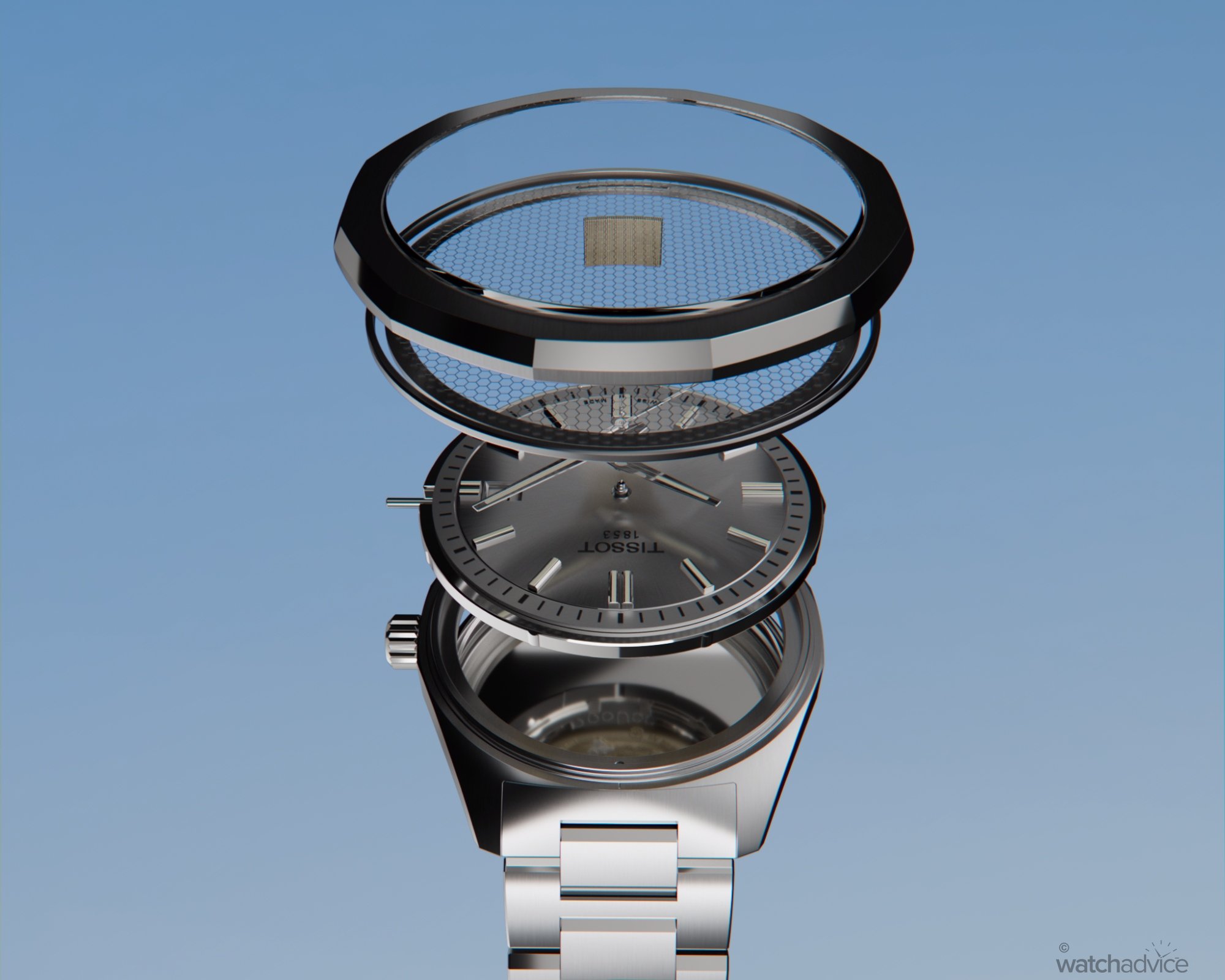
And that’s where those honeycomb hexagons under the crystal come in. Far from being a purely aesthetic detail, they’re actually functional solar cells. Unlike traditional solar watches that rely on light-permeable dials to power the movement, the PRC 100 Solar channels light through the crystal itself. The honeycomb pattern acts as a series of mini photovoltaic cells that capture light and direct it to the movement below, charging the battery discreetly and efficiently. The result? A 14-month power reserve with just 10 minutes of full sun exposure needed for a 24-hour charge. That’s a serious performance upgrade.
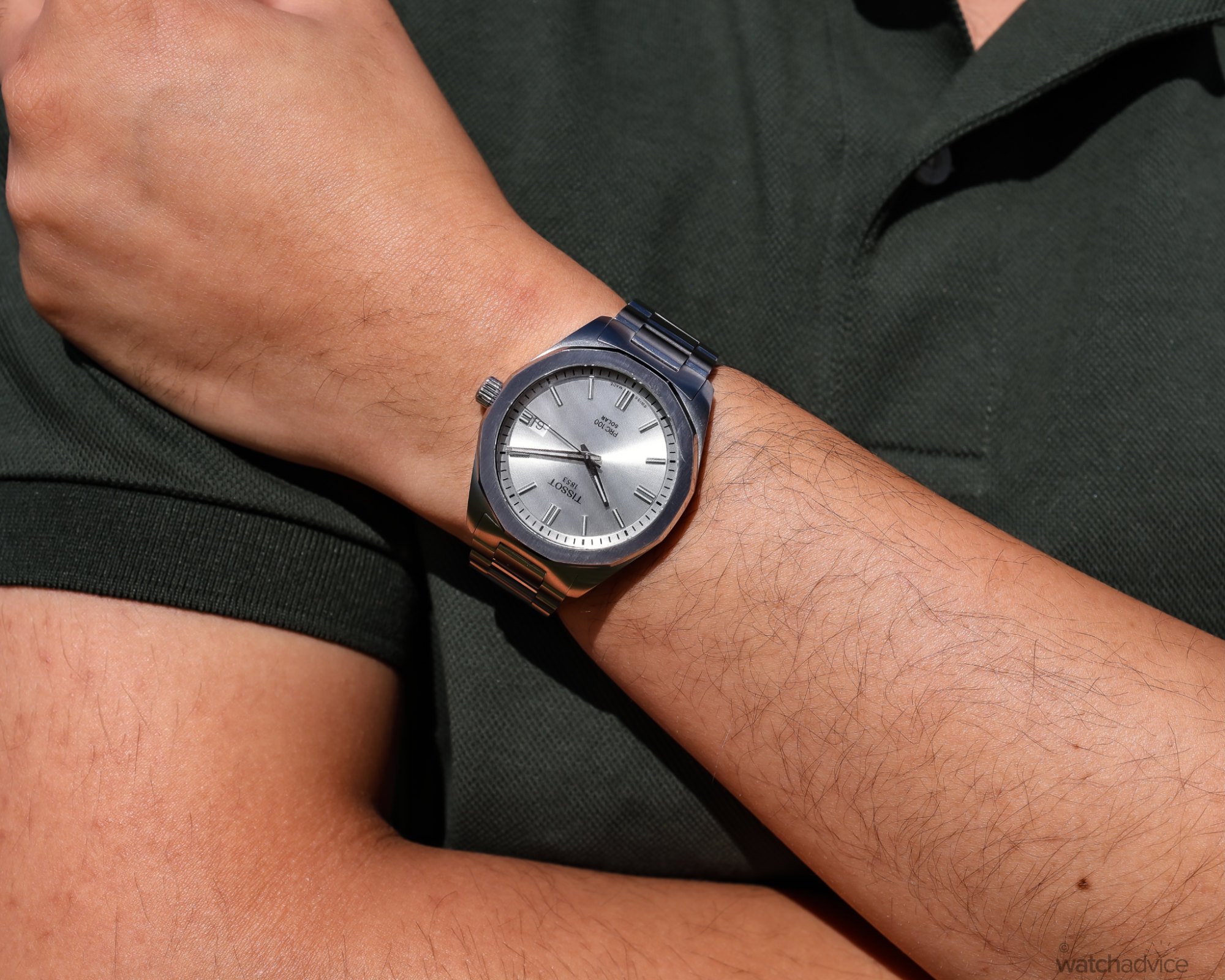
Now, while I couldn’t get all the technical specifics — Tissot understandably wants to keep their recipe a secret — I did manage to get a few fascinating insights from Tissot Australia’s General Manager, Daniel Rugman:
“[Tissot] invested 20 million Francs into developing the technology for the PRC 100… this kind of solar quartz technology, where the solar cells are mounted beneath the crystal, is unlike anything seen before in the watch industry.”
Daniel Rugman, Tissot Australia General Manager
Tissot’s Lightmaster technology signals a major shift in the brand’s approach to watch design. Since the solar cells are mounted directly onto the crystal rather than the dial, it opens up a wider range of creative possibilities for future models that use Lightmaster quartz movements. Daniel was happy to speculate on this potential, pointing to his personal T-Touch Connect as a watch that could greatly benefit from Lightmaster integration. But the big question I had in mind was: “When will we see this technology in the PRX?”
Daniel just laughed and replied, “Never say never.”
Final Thoughts
As a Gen Z twenty-something who developed a passion for watches during their COVID-era boom, I was quickly conditioned to dislike quartz. According to the internet watch community, quartz was the enemy — something to be avoided at all costs. But as my enthusiasm for this beautiful blend of art and science deepened, I eventually shed those early biases and found a more balanced appreciation for all types of timekeeping. Even with that more diplomatic view, though, the Tissot PRC 100 Solar stands out. It’s a shining example of what entry-level solar quartz watchmaking can look like when done by a brand firing on all cylinders.
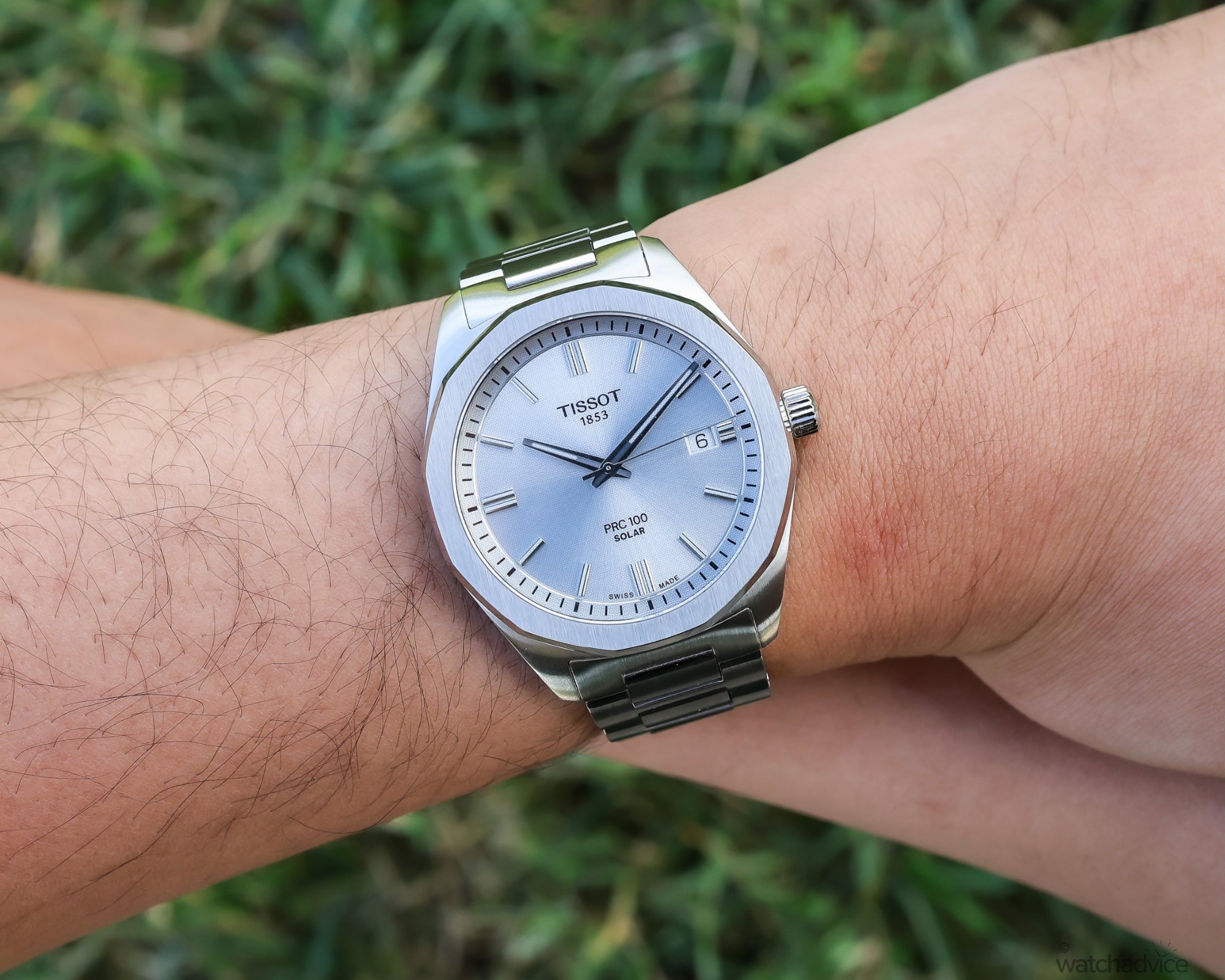
Of course, no product exists in a vacuum — especially not in the sub-AU$1,000 market, where competition is fierce. At AU$765 (as of writing), the PRC 100 Solar positions itself as a premium option within the solar quartz segment. Its most immediate rivals? Seiko and Citizen — two powerhouses that have had decades to refine their solar technologies. Two particularly relevant alternatives are the AU$799 Citizen Ref. BN1014-55E and the AU$675 Seiko Coutura Ref. SNE516. Both offer competitive specs, but lean into more abstract, adventurous designs — a common trait among solar quartz watches from these Japanese giants. That contrast alone allows the PRC 100 Solar’s more classical aesthetic to carve out its own niche.
But what really sets Tissot apart is the Lightmaster technology. While Seiko and Citizen may have led the solar quartz race for years, Lightmaster feels like a genuine leap forward. By integrating the solar cells directly into the crystal instead of the dial, Tissot gains new-found design freedom not seen in offerings from its competitors. And because this tech theoretically works with any quartz movement, it has the potential to scale across Tissot’s entire lineup, unlocking creative and technological opportunities that neither Seiko nor Citizen have yet explored.
In that sense, while the PRC 100 Solar is impressive on its own, it also feels like a signal flare for something bigger – a statement of intent. And if Tissot plays their cards right, Lightmaster might just be the spark that reshapes the solar quartz category entirely. For now, though, it’s more than enough to cement the PRC 100 Solar as a must-watch (pun intended) release — and possibly the start of a new ‘big three’ in affordable, progressive watchmaking.
Reference: T151.422.11.031.00 (Steel Bracelet, Silver Dial)
Specifications
- Dimensions: 39mm case diameter x 44.6mm lug-to-lug x 9.22mm thickness
- Case Material: Stainless steel
- Dial: Sunray-brushed silver
- Movement: ETA F06.615 quartz movement with EoE (End of Energy) indicator and Lightmaster solar technology
- Battery Life: 14 months maximum, charging 24 hours per 10 minutes in sunlight (Given a typical day of ~5000 Lux)
- Water Resistance: 100m (10bar)
- Strap: Stainless steel bracelet with butterfly clasp
Australian RRP: AU$765
Availability: Available now, in-store at Tissot boutiques, at authorised retailers, and online at Tissot.com.
Image Gallery
